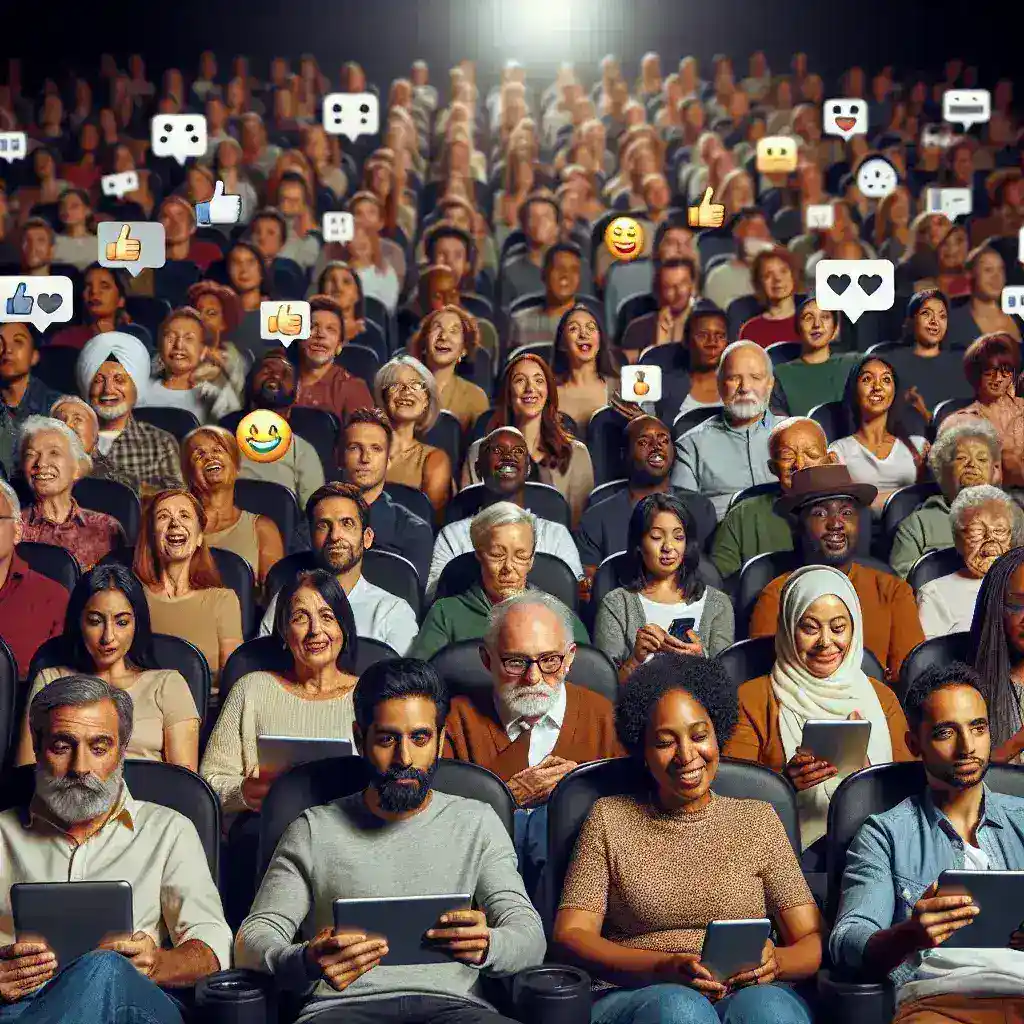Introduction
In an era where audience engagement is paramount, Warner Bros. has taken a groundbreaking step by introducing live audience feedback integration during film premieres. This innovative approach not only enhances the viewing experience but also allows filmmakers to gauge real-time reactions, fostering a deeper connection between creators and viewers.
The Evolution of Film Premieres
Film premieres have long served as a crucial avenue for studios to showcase their latest projects. Traditionally, these events were characterized by red carpets, star-studded guests, and anticipation surrounding audience reactions. However, as the landscape of entertainment evolves, so too must the methods of engagement.
Historical Context
Historically, premieres were exclusive events limited to industry insiders, critics, and select fans. Feedback was gathered through reviews and box office performance, often days or weeks after the premiere. This delayed response mechanism did not provide filmmakers with immediate insights into their audience’s preferences and reactions.
The Shift to Real-Time Feedback
With the rise of social media and instant communication, audiences now have platforms to voice their opinions immediately. Warner Bros. recognized this shift and sought to harness the power of real-time feedback during premieres. By integrating live audience responses, studios can now understand viewer sentiment as it unfolds.
How Live Audience Feedback Works
The integration of live audience feedback utilizes technology that captures viewer reactions through various means, including mobile apps and in-theater devices. These systems allow audience members to rate scenes, provide comments, and even participate in polls during the screening.
The Technical Framework
At the heart of this innovation is a sophisticated technical framework designed to ensure seamless interaction. The audience may use a dedicated app on their smartphones or participate through in-theater kiosks equipped with touch screens. This system is implemented to maintain user engagement without distracting from the viewing experience.
Data Collection and Analysis
As viewers provide feedback, data is collected in real time and analyzed. Filmmakers and producers can access these insights almost instantly, allowing them to assess which elements of a film resonate with the audience and which aspects may require reconsideration for future releases.
The Impact on Filmmaking
The integration of live audience feedback has profound implications for the filmmaking process. It allows creators to better understand their audience’s preferences, enabling them to tailor content that aligns with viewer expectations.
Pros of Live Audience Feedback
- Enhanced Viewer Engagement: Audiences feel more involved in the filmmaking process, knowing their opinions can influence decisions.
- Immediate Insights: Filmmakers receive feedback while the film is still fresh in viewers’ minds, leading to more actionable insights.
- Data-Driven Decisions: The data collected can inform marketing strategies, distribution choices, and even sequels or spin-offs.
Cons of Live Audience Feedback
- Potential for Bias: Audience reactions may be influenced by social dynamics or groupthink, leading to skewed perceptions.
- Overemphasis on Popularity: Filmmakers may feel pressured to cater to audience feedback at the expense of their creative vision.
- Technical Challenges: Implementing and managing feedback systems can present logistical hurdles during premieres.
Case Studies: Successful Implementations
Several successful film premieres have already adopted this innovative feedback integration. For instance, during the premiere of a recent blockbuster, Warner Bros. utilized a mobile app that allowed viewers to share their thoughts on various scenes. The immediate feedback on a pivotal plot twist led to discussions among the creative team the very next day, allowing for potential adjustments in marketing strategies.
The Future of Audience Engagement
As the entertainment industry continues to evolve, the integration of live audience feedback is poised to redefine how premieres are conducted. The ability for filmmakers to engage with their audience in real time creates opportunities for deeper storytelling and more relatable content.
Predictions for the Future
Experts predict that as technology advances, audience feedback mechanisms will become even more sophisticated. Virtual reality experiences, AI-driven insights, and gamified feedback systems may emerge, offering new dimensions of engagement. The future of premieres could involve immersive experiences where viewers participate in the storytelling process, shaping narratives based on collective feedback.
Cultural Relevance
The rise of live audience feedback is not only a technological advancement but also a cultural phenomenon. As audiences become more vocal about their preferences, the demand for transparency and authenticity in storytelling increases. Filmmakers who embrace this shift will likely resonate with a generation that values connection and engagement.
Conclusion
Warner Bros.’ introduction of live audience feedback integration marks a significant milestone in the evolution of film premieres. By embracing technology and prioritizing audience engagement, the studio sets a new standard for how films are created, marketed, and experienced. As we look to the future, the implications of this shift will undoubtedly reverberate throughout the industry, ushering in a new era of cinematic storytelling that is as dynamic and interactive as the audiences it aims to entertain.

